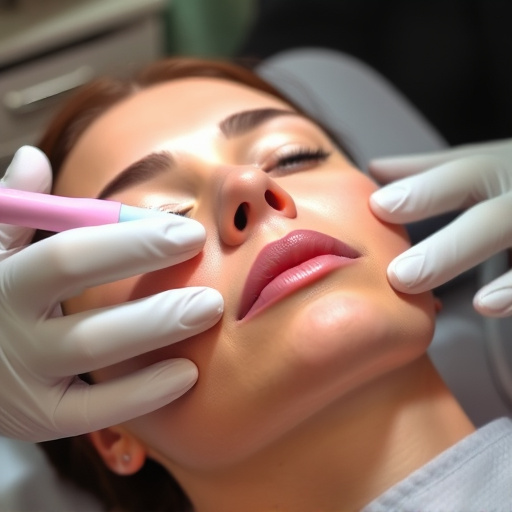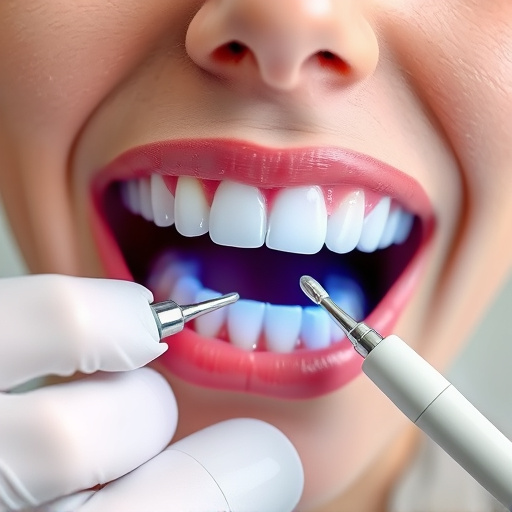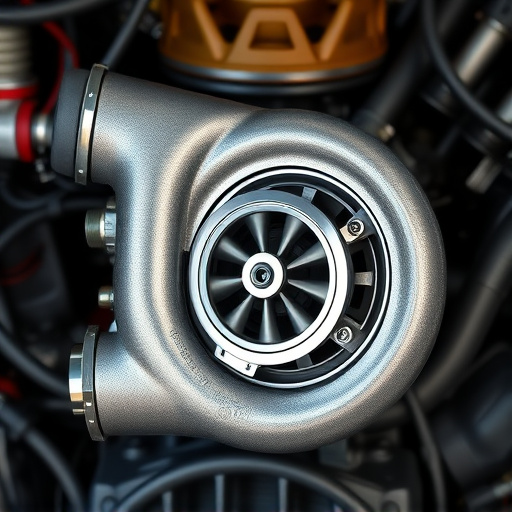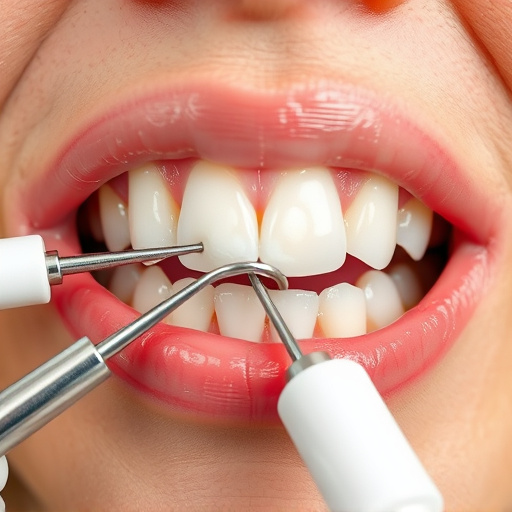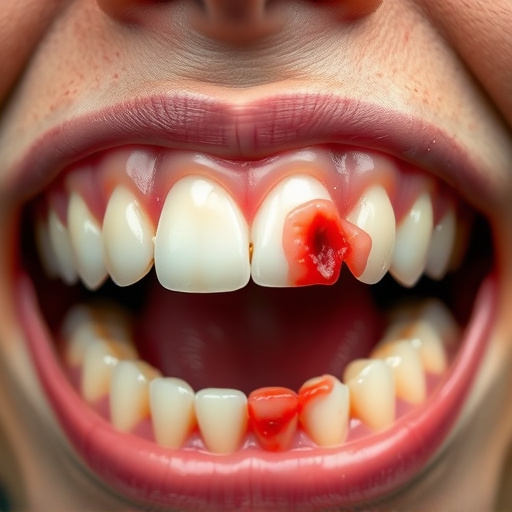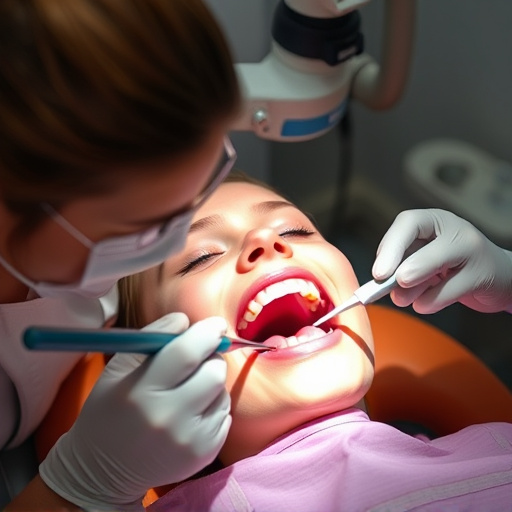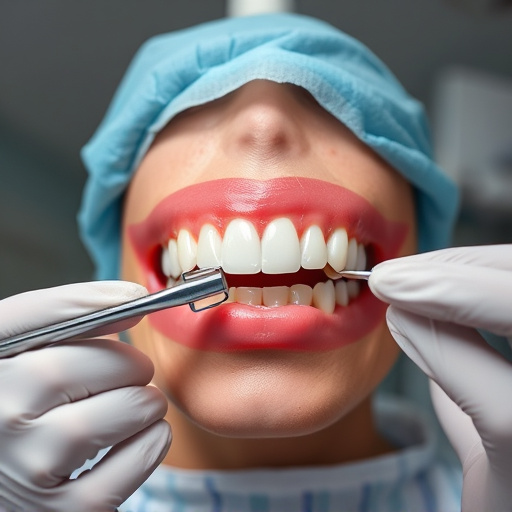Dental crowns and bridges are effective solutions for repairing damaged or missing teeth, enhancing both oral function and aesthetics. The placement process involves preparing the teeth, taking impressions, and cementing/bonding the restorations. Regular dental care, including cleanings, check-ups, brushing, flossing, mouthwash, and a soft toothbrush, is crucial to maintain these structures' longevity alongside other treatments like clear aligners or extractions. Proactive maintenance and timely repairs are essential; signs of replacement include wear, chipping, or sensitivity. Following proper oral hygiene practices and attending regular dental appointments can maximize the lifespan of dental crowns and bridges.
Dental crowns and bridges are essential components of oral health, offering durability and aesthetic restoration. This article explores the best practices for maintaining these solutions, focusing on both patient care and professional recommendations. From understanding the materials used in dental crowns and bridges to establishing regular care routines, you’ll discover key strategies to ensure longevity. Additionally, we’ll discuss signs indicating replacement or reconstruction needs and provide maintenance tips to keep your dental restorations in optimal condition.
- Understanding Dental Crowns and Bridges: Materials and Placement
- Regular Care Routines for Longevity and Health
- When to Replace or Reconstruct: Signs and Maintenance Tips
Understanding Dental Crowns and Bridges: Materials and Placement
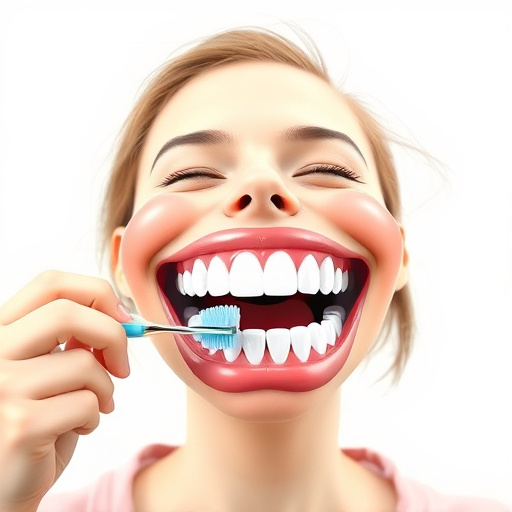
Dental crowns and bridges are essential dental restorations that play a crucial role in maintaining oral health and aesthetics. A crown, essentially a cap, is placed over a tooth to restore its size, shape, and strength after damage or decay. They are typically made from materials like ceramic, porcelain, or metal alloys, chosen based on the patient’s needs and aesthetic preferences. Bridges, on the other hand, are used to replace one or more missing teeth, connecting adjacent natural teeth as artificial replacements.
The placement process involves several steps, starting with tooth preparation where the dentist shapes the existing tooth to accommodate the crown or bridge. This is followed by taking impressions of the oral cavity to create precise models for crafting the restoration. Once ready, the dental crowns and bridges are cemented or bonded onto the prepared teeth or implants, ensuring a secure fit. Regular dental cleanings and check-ups are vital to maintain these restorations, as they help prevent further decay and ensure long-lasting functionality alongside clear aligners or addressing tooth extractions.
Regular Care Routines for Longevity and Health
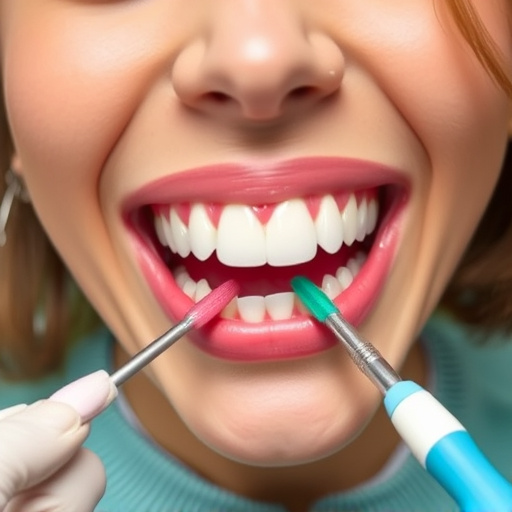
Maintaining optimal oral health is paramount for ensuring the longevity of dental crowns and bridges. Regular care routines play a pivotal role in preserving these restorative dentistry solutions, which are often employed to restore function and aesthetics following tooth repair or loss. Daily brushing and flossing are essential practices that help remove plaque and debris from under and around crowns and bridges, preventing gum disease and other complications.
Additionally, utilizing mouthwash can further bolster oral hygiene by reducing bacteria and freshening breath. It’s important to be mindful of the foods you consume, avoiding hard or sticky substances that could dislodge or damage these structures. Regular dental check-ups are also crucial, allowing dentists to monitor the condition of your crowns and bridges, as well as address any potential issues promptly, thereby maintaining their integrity and promoting long-term health.
When to Replace or Reconstruct: Signs and Maintenance Tips
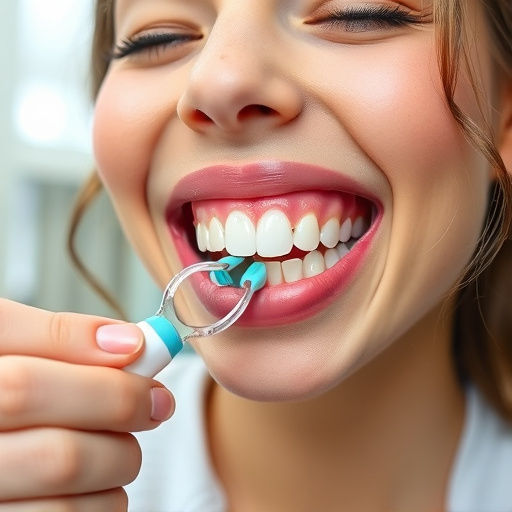
The longevity of dental crowns and bridges largely depends on proper maintenance and timely reconstruction. While regular cleaning routines are crucial to preventing tooth decay, there comes a point when simple upkeep isn’t enough. Signs that your dental crowns or bridges may need replacing include significant wear, chipping, or cracking. Increased sensitivity, pain while chewing, or persistent bad breath can also indicate an underlying issue.
To extend the lifespan of your dental crowns and bridges, avoid excessive force while chewing hard foods, use a soft-bristled toothbrush, and maintain regular check-ups with your family dentistry practitioner. Additionally, clear aligners, when worn correctly alongside proper oral hygiene practices, can help protect your investment by minimizing the risk of damage during orthodontic treatments or everyday activities.
Maintaining dental crowns and bridges is essential for long-term oral health and aesthetics. By understanding the materials and placement processes, individuals can effectively care for these restorations through regular cleaning routines and proper maintenance. Knowing when to replace or reconstruct damaged crowns and bridges is crucial, as it prevents further complications. Regular check-ups with dentists and adhering to care tips will ensure these procedures withstand the test of time, promoting a healthy smile.
